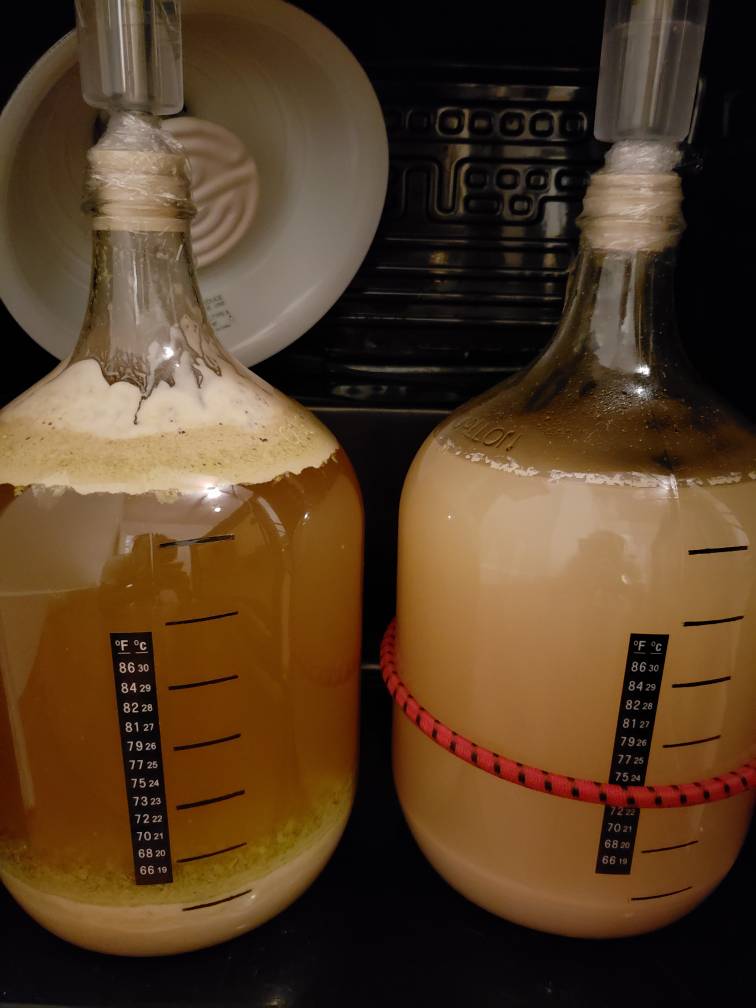Christophrawr
Well-Known Member
Hello!!
After incubating my lacto culture at 90F for 2 days in my primary I chilled to 65 and pitched my sacc. It's been 3 days and sure it's bubbling but slow and zero krausen.
Is this normal when pitching sacc into a low ph environment? My gut tells me yes. I didn't do a starter but compensated by over pitching.
RDWHAHB?
1 GALLON Berliner Weisse grain bill
1.035 OG
0 IBU
Pre acidified wort to 4.1
Pitched lacto and held at 90F 2 days
Pitched 10g of dried yeast (5g US04 5g Nottingham) (straight pitch)
Fermenting at 65F
Picture - the right carboy is the one in question. It's cloudy and looks like a regular fermentation but no krausen forming and sloooowly bubbling.

After incubating my lacto culture at 90F for 2 days in my primary I chilled to 65 and pitched my sacc. It's been 3 days and sure it's bubbling but slow and zero krausen.
Is this normal when pitching sacc into a low ph environment? My gut tells me yes. I didn't do a starter but compensated by over pitching.
RDWHAHB?
1 GALLON Berliner Weisse grain bill
1.035 OG
0 IBU
Pre acidified wort to 4.1
Pitched lacto and held at 90F 2 days
Pitched 10g of dried yeast (5g US04 5g Nottingham) (straight pitch)
Fermenting at 65F
Picture - the right carboy is the one in question. It's cloudy and looks like a regular fermentation but no krausen forming and sloooowly bubbling.

Last edited:











![Craft A Brew - Safale S-04 Dry Yeast - Fermentis - English Ale Dry Yeast - For English and American Ales and Hard Apple Ciders - Ingredients for Home Brewing - Beer Making Supplies - [1 Pack]](https://m.media-amazon.com/images/I/41fVGNh6JfL._SL500_.jpg)















































